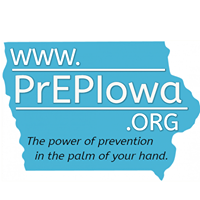
Iowa is now a national leader in rural HIV and sexually transmitted infection (STI) prevention, with the launch of TelePrEP, an innovative telehealth program.
PrEP – Pre-Exposure Prophylaxis – refers to a daily medication regimen which prevents human immunodeficiency virus (HIV) infections for those without HIV who are at risk of contracting the virus.
The Iowa program combines secure video conferencing for in-home visits between patients and University of Iowa Health Care pharmacists and providers with medication delivery by mail to expand HIV prevention across the state of Iowa, especially in rural areas.
“We know that there are people in rural Iowa who are at risk for HIV. Approaches that work well for delivering PrEP in large cities don’t adapt to rural Iowa. We need to try different approaches such as this telehealth technology to make sure PrEP is available to those who need it, regardless of where they live,” Michael Ohl, a UI Health Care infectious disease specialist and medical director of the TelePrEP service, stated in a press release.
The telehealth service involves pharmacists, physicians and public health professionals from the Signal Center for Health Innovation, the Iowa Department of Public Health, Johnson County Public Health and the UI Health Care Departments of Infectious Disease and Pharmaceutical Care. The pilot is funded by the Iowa Department of Public Health (IDPH).
“The collaborative partnership aims to significantly interrupt the chain of HIV transmission and reduce new infections across the state of Iowa, especially by increasing access for individuals living in rural Iowa through technology,” Patricia Young, program manager of HIV & Hepatitis Prevention at the IDPH, stated in a press release.
According to the IDPH, the number of new HIV diagnoses increased 11 percent from 2015-2016 in Iowa. In addition, STI rates, including chlamydia, gonorrhea and syphilis, are rising.
The goals of the TelePrEP program are to reduce the number of new HIV infections throughout the state and decrease the cost of treating HIV infections over the next five years.




